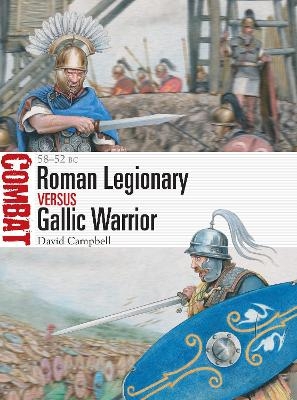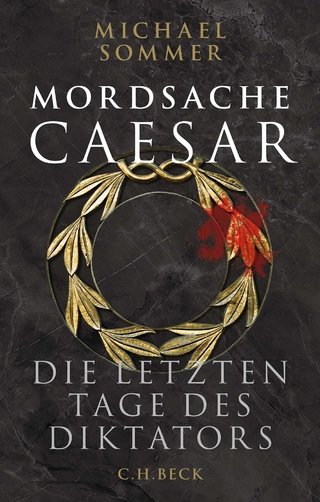
Roman Legionary vs Gallic Warrior
Osprey Publishing (Verlag)
978-1-4728-4424-8 (ISBN)
The Roman Army of the late Republic had long been in the process of structural and change, moving towards the all-volunteer permanent standing force that would for centuries be the bulwark of the coming Empire. Well-armed and armoured, this professional army was trained to operate within self-supporting legions, with auxiliaries employed in roles the legions lacked such as light troops or cavalry. The Roman legions were in many ways a modern force, with formations designed around tactical goals and held together by discipline, training and common purpose.
The armies fielded by the tribes of Gaul were for the most part lightly armed and armoured, with fine cavalry and a well-deserved reputation for ferocity. As might be expected from a region made up of different tribes with a range of needs and interests, there was no consensus on how to make war, though when large armies were gathered it was usually with the express purpose of bringing the enemy to heel in a pitched battle. For most Gauls – and certainly the military elites of the tribes – battle was an opportunity to prove their personal courage and skill, raising their status in the eyes of friends and foes alike.
Fully illustrated, this study investigates the Roman and Gallic forces pitched into combat in three battles: Bibracte (58 BC), Sabis (57 BC) and Gergovia/Alesia (52 BC). Although charismatic Gallic leaders did rise up – notably Dumnorix of the Aedui and later Vercingetorix of the Arverni – and proved to be men capable of bringing together forces that had the prospect of checking Caesar’s ambitions in the bloodiest of ways, it would not be enough. For Caesar his war against the Gauls provided him with enormous power and the springboard he needed to make Rome his own, though his many domestic enemies would ensure that he did not long enjoy his success.
David Campbell has worked as a freelance new media producer and content specialist for many years, including roles at IBM, the BBC, various internet consultancies and the civil service. He has a broad range of interests in literature and history, including the Middle Ages, the Napoleonic era, naval warfare and the genesis of the "Military Revolution." He lives in Hampshire, UK. Raffaele Ruggeri was born in Bologna where he works and lives with his wife. After studying at the Fine Arts Academy he worked in several areas of graphics and design before deciding to devote himself to illustration. He has long been interested in military history and has illustrated a number of books for Osprey.
Introduction
The Opposing Sides
Bibracte, 28 June 58 BC
The Sabis, 13 August 57 BC
Alesia, Ausugst-October 52 BC
Analysis
Aftermath
Bibliography
Index
| Erscheinungsdatum | 19.04.2021 |
|---|---|
| Reihe/Serie | Combat |
| Illustrationen | Raffaele Ruggeri |
| Sprache | englisch |
| Maße | 184 x 248 mm |
| Gewicht | 266 g |
| Themenwelt | Sachbuch/Ratgeber ► Geschichte / Politik ► Allgemeines / Lexika |
| Geschichte ► Allgemeine Geschichte ► Altertum / Antike | |
| Geschichte ► Teilgebiete der Geschichte ► Militärgeschichte | |
| Sozialwissenschaften ► Politik / Verwaltung | |
| ISBN-10 | 1-4728-4424-6 / 1472844246 |
| ISBN-13 | 978-1-4728-4424-8 / 9781472844248 |
| Zustand | Neuware |
| Informationen gemäß Produktsicherheitsverordnung (GPSR) | |
| Haben Sie eine Frage zum Produkt? |
aus dem Bereich


